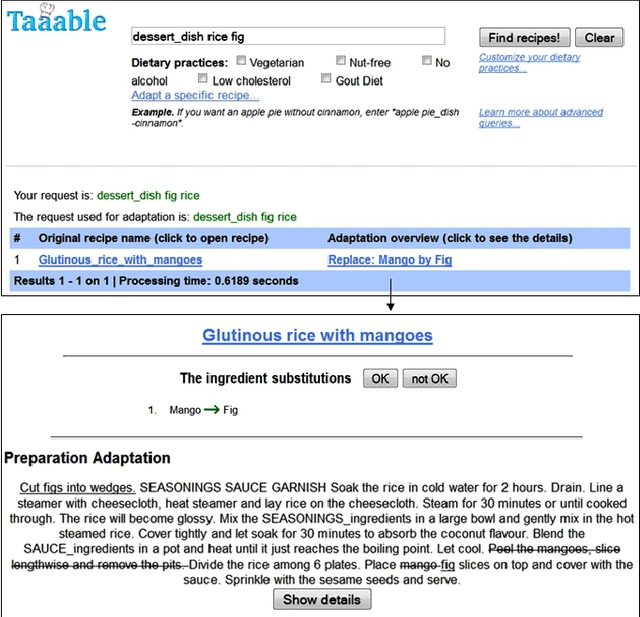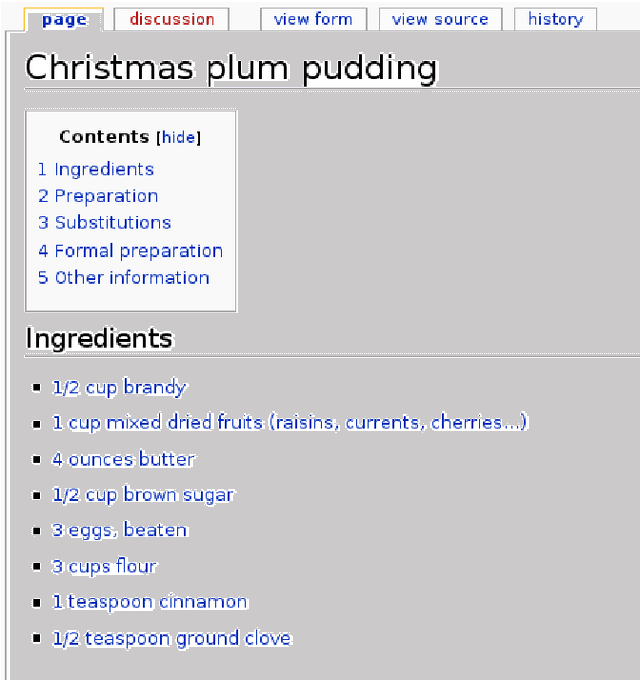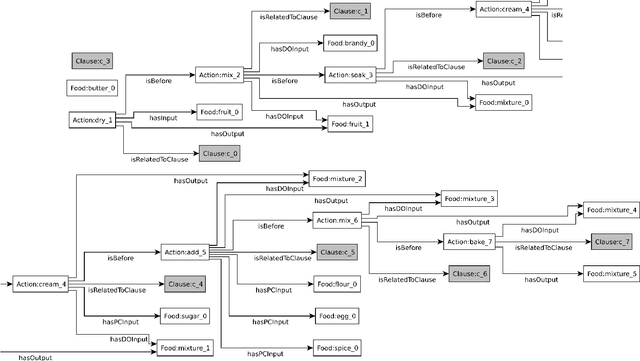Thomas Meilender
INRIA Lorraine - LORIA
Semi-automatic annotation process for procedural texts: An application on cooking recipes
Sep 25, 2012



Abstract:Taaable is a case-based reasoning system that adapts cooking recipes to user constraints. Within it, the preparation part of recipes is formalised as a graph. This graph is a semantic representation of the sequence of instructions composing the cooking process and is used to compute the procedure adaptation, conjointly with the textual adaptation. It is composed of cooking actions and ingredients, among others, represented as vertices, and semantic relations between those, shown as arcs, and is built automatically thanks to natural language processing. The results of the automatic annotation process is often a disconnected graph, representing an incomplete annotation, or may contain errors. Therefore, a validating and correcting step is required. In this paper, we present an existing graphic tool named \kcatos, conceived for representing and editing decision trees, and show how it has been adapted and integrated in WikiTaaable, the semantic wiki in which the knowledge used by Taaable is stored. This interface provides the wiki users with a way to correct the case representation of the cooking process, improving at the same time the quality of the knowledge about cooking procedures stored in WikiTaaable.
Edhibou: a Customizable Interface for Decision Support in a Semantic Portal
Nov 03, 2008
Abstract:The Semantic Web is becoming more and more a reality, as the required technologies have reached an appropriate level of maturity. However, at this stage, it is important to provide tools facilitating the use and deployment of these technologies by end-users. In this paper, we describe EdHibou, an automatically generated, ontology-based graphical user interface that integrates in a semantic portal. The particularity of EdHibou is that it makes use of OWL reasoning capabilities to provide intelligent features, such as decision support, upon the underlying ontology. We present an application of EdHibou to medical decision support based on a formalization of clinical guidelines in OWL and show how it can be customized thanks to an ontology of graphical components.
 Add to Chrome
Add to Chrome Add to Firefox
Add to Firefox Add to Edge
Add to Edge